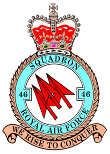|
And in time, the snow melted and the picture appeared: the debris of a wrecked aeroplane close to XXX on the Pla de XXX. The cowherd hurried down to XXX and raised the alarm. It was then 20 June 1945. A few days later, the mayor organised the reconnaissance team mentioned above. The date registered is: end of June 1945. The Independent only makes brief mention of the accident, in 1953 when there was another crash. At the time of the accident, there was only the local paper, Le Republicain, because the Independent had been banned. As a result of paper restrictions and censorship, the local paper consisted of only two leaves, i.e. four A4 pages (210, 297mm). This state of affairs prevented local journalists from reporting on this type of incident.
One must put oneself in the context of the period 1939/1945: it was still wartime…
The crash was mentioned in the press only in comparison to another incident, in an article entitled “XXX has been calling for a road for 40 years”. This article reported on the dilapidated state of the roads, which, following a second plane crash close to XXX on 26 September 1953, had made the evacuation of the victims’ bodies impossible. The first salvage team buried the bodies at the scene because it was practically impossible to bring them down to XXX. The mayor informed the authorities. Spanish smugglers quickly got news of the accident. They pillaged everything that could be sold, in particular the metal panels of the fuselage, which they could easily sell on in Spain. It was not until the end of September that a second team was organised, on the orders and in the presence of the British military, for an initial identification of the site. The remains of the bodies were placed in bags that were brought down with difficulty to the XXX pass. There, it was impossible to continue because the descent of almost 1400m to XXX proved to be extremely difficult and dangerous. The bags were eventually brought down by donkey to the small village of XXX, where they were provisionally interred in the presence of British officers, who identified five officers and four NCOs. We now know that the bodies of the airmen were transferred in 1947 to the Allied military cemetery at Mazargues, a suburb of Marseille, the “Mazargues War Cemetery”. They remain there to this day, in lane E1, with individual headstones.
f) We know that the aeroplane was not carrying post, although from time to time it was used to transport freight and post. The aeroplane had the capacity to do this without disrupting normal operations or training exercises.
g) The authorities and the local press knew nothing about the Short Stirling crash and its exact date until the discovery of the wreck. In 1945, there was no road linking XXX to XXX. There was nothing but mountain paths. If there had been a road at that time, the transfer of the remains would have been less difficult.
After the war, officers from the Commission for the Preservation and Conservation of Graves were sent to Europe in order to try and locate all military personnel who had been killed, but whose bodies had not been recovered. It is one of these teams which would have gone to XXX to identify the bodies of the crew. In this way, the temporary graves were rediscovered, the bodies exhumed and identified, and the victims given a military funeral (with military honours). The bodies were not sent back to Britain and rest permanently at Mazargues, 6km to the south east of Marseille, next to La Ciotat, on the west side of the highway.
The rumours that the aeroplane was transporting gold are without foundation.
List of the victims and their details
British:- Phipps, Alan Reginald, 20, Sergeant. – Ross, Alexander McKenzie, 21, Flight Sergeant. – Coad, John Martin, 25, Flight Sergeant. – Cooper, 25, Flight Lieutenant. – Jones, Franck Reginald, 22, Flight Sergeant.
Australians:- Cowan, Ian Rees, 22 (Flying Officer). – Douglas, Francis William, 24, Flying Officer.
Canadians:- Couldrey, Gordon, 28, Flight Lieutenant. – McMillan, Archibald Kenzie, 22, Pilot Officer.
Pilots:- Cooper, Couldray and McMillan.
|





